 username@email.com
username@email.com
In this lesson, you will review and compare the basic structures of representative animals and their internal systems.
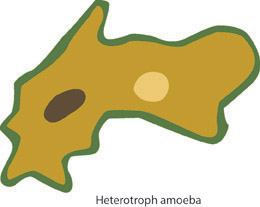 In single-celled organisms such as amoeba, the entire surface of the cell is in contact with the environment and able to exchange materials with the external environment. The organism has a large amount of surface area in relation to the cell’s volume.
In single-celled organisms such as amoeba, the entire surface of the cell is in contact with the environment and able to exchange materials with the external environment. The organism has a large amount of surface area in relation to the cell’s volume.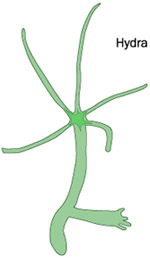 A hydra is a larger and more complex multicellular organism with two layers of slightly differentiated cells. The cells are organized into two layers, so that almost all of the cells are still in contact with the environment and can still exchange materials directly.
A hydra is a larger and more complex multicellular organism with two layers of slightly differentiated cells. The cells are organized into two layers, so that almost all of the cells are still in contact with the environment and can still exchange materials directly.
As organisms grow ever more complex, direct exchange with the environment is difficult. In response to this need, several complex systems have evolved that allow all cells to exchange materials as needed.
All of these systems have evolved structures to maximize the area of tissue where exchange with the environment takes place. For example, the lining of the small intestine, where most absorption of nutrients takes place, is folded and grooved. The folds and grooves are covered with villi, small finger-like protrusions that greatly increase surface area. The epithelial cells of the villi are themselves covered with many microscopic protrusions called microvilli. Another example is in the lungs; the bronchial tubes branch and rebranch again and again, finally terminating into millions of tiny alveoli, where the gas exchange takes place.
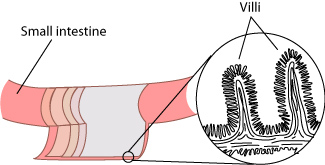
Which of the following organisms has all its cells directly in contact with the external environment?
The correct answer is D. The cells of choices A, B, and C are not all in direct contact with the external environment.
In complex multicellular organisms, most internal cells are in contact with a controlled internal environment, rather than being in direct contact with the external environment. There are many advantages to a controlled internal environment, including the advantage of releasing the organism from dependence on water in the external environment. The disadvantage is the need for systems that can transport materials to and from the various cells in the organism’s body.
Invertebrates have a simple gastrovascular cavity. The single gastrovascular cavity of hydra and planarians serves multiple functions of digestion, distribution of materials throughout the body, and excretion.
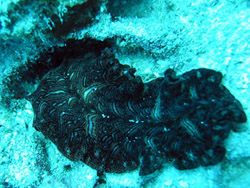
Flatworms have no circulatory system. The mouth of a flatworm leads to its digestive system, which is highly branched and reaches every cell of the organism. The delivery of nutrients, oxygen, and water takes place through this digestive system.
Arthropods and mollusks have open circulatory systems with blood bathing the outer surfaces of the internal organs. This blood is circulated by muscular contractions of the whole animal or by a simple heart consisting of a single muscular tube.
Vertebrates have a closed circulatory system, with the blood confined to specialized vessels that are separate from the interstitial fluid. One or more hearts pump the blood into tubes that branch into smaller and smaller vessels, allowing the blood to service the organs.

Vertebrate phylogeny can be traced through adaptations in the cardiovascular systems. The hearts of simpler animals, such as fish, may have only one atrium and one ventricle.

Frogs and other amphibians have a three-chambered heart with two atria and one ventricle. The ventricle pumps blood into a single, large artery that forks into two branches. One branch goes to the lungs and skin (much gas exchange takes place through the skin of amphibians), while the other branch leads to the various organ systems. Oxygen-rich blood from the lungs and skin returns to the left atrium, while oxygen-poor blood from the systemic circuit returns to the right atrium. Separation of oxygen-rich and oxygen-poor blood in the ventricle depends on patterns of fluid flow. Reptiles also have a three-chambered heart, but the ventricle is partially divided, improving separation of oxygen-rich from oxygen-poor blood.

Birds and mammals both have four-chambered hearts, so the oxygen-rich blood is completely separated from the oxygen-poor blood. However, birds and mammals evolved from different reptilian ancestors, so the four-chambered heart adaptation is an example of parallel evolution.
Mammals and birds are endotherms and use metabolism to maintain elevated body temperature. Because of higher rates of metabolism, mammals and birds require more oxygen-rich blood per kilogram of body weight than any other animals. Exotherms, such as reptiles, do not use energy from metabolism to maintain body temperature so they can get by with somewhat less oxygen.
Which of the following organisms has a closed circulatory system?
The correct answer is D. Choices A, B, and C have open circulatory systems.
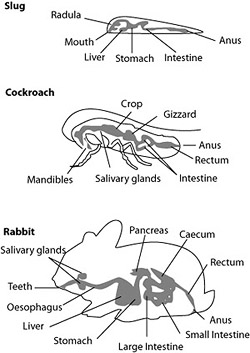
A comparison of digestive systems between different mammals of similar size reveals significant evolutionary adaptations to different diets. For example, coyotes and koalas are about the same size. Coyotes are primarily carnivores and have relatively short, simple digestive systems consisting of a stomach, a length of small intestine, and a colon, or cecum. The cecum is very short and almost vestigial. Since meat is easy to digest, the short digestive tract is sufficient. In contrast, koalas have much longer intestines with a cecum about two meters long—the longest of any mammal. Koalas consume hard-to-digest eucalyptus leaves exclusively. The extremely long cecum is necessary to allow fermentation by symbiotic intestinal bacteria. The cecum and large intestine serve primarily to compact and store waste and recover water.
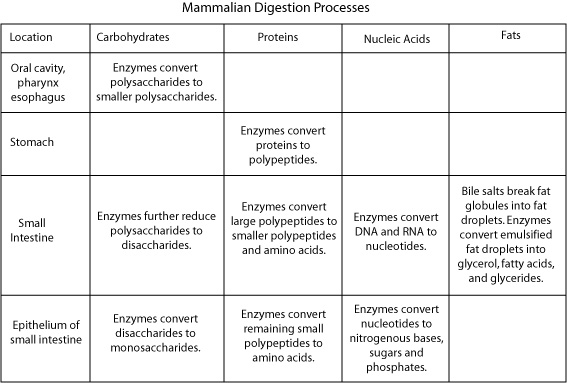
Which of the following digestive system structures serves to compact and store waste and recover water?
The correct answer is A. Both the cecum and colon compact and store wastes and recover water. Choices B, C, and D are part of the digestive system, but they do not perform these functions.
Many organ systems participate in excretion. The circulatory system has the primary role of transporting waste products from the cells where they are produced to the organs where they are concentrated and converted into urine. There are many, diverse excretory systems, but they all have features in common. They provide osmoregulation, as well as waste disposal.
The simplest excretory systems are the flame-bulb systems of flatworms. These are tubes that branch throughout the body of the flatworm, terminating in a cluster of cells called a flame bulb. The flame bulbs have cilia that draw blood through the cells where waste is absorbed. These cilia also propel the fluid out of the body through an external pore.
Annelids have a slightly more complex system. Each segment of the annelid has a long tube surrounded by capillaries. These tubes empty into a bladder that discharges urine through an external pore.
Arthropods have excretory organs known as malphigian tubes. They remove primarily nitrogenous waste from the blood and also participate in osmoregulation. The malphigian tubes empty into the digestive tract.
Vertebrates employ kidneys. Instead of being spread throughout the body, the excretory organs are concentrated into the pair of kidneys. Blood constantly circulates through the kidneys where a complex system of ducts serves to transfer waste from the blood to the nephrons. Fluid that collects in the nephrons passes into collecting ducts and is eventually collected and stored in the bladder. The most important evolutionary adaptation of vertebrate kidneys is the ability to form urine that has a much higher concentration of salts and other materials. This conserves water, allowing vertebrates and especially mammals to survive in a wide variety of terrestrial environments where water may be limited.
Which excretory organ belongs to arthropods?
The correct answer is B. The flame bulb belongs to the flatworm. The external pore belongs to the annelids. Kidneys belong to vertebrates.
Cnidarians are radially symmetrical animals with the simplest nervous systems, consisting of a network of nerve cells that connects sensory cells with muscle cells. There is no centralization or division of the nervous system.

In contrast, animals with bilateral symmetry have a definite anterior end. In these animals there is the beginning of a concentration of nerves and primitive sense organs into this anterior end, because this end of the animal moves through the environment first. As evolution proceeded, the anterior end of the central nervous system became larger to accommodate these sense organs. The larger, anterior end of the central nervous system is called the brain. The degree of development of the brain is called cephalization. Highly cephalized animals have a large brain. These more complex nervous systems with the hints of a central nervous system may have evolved from a cnidarian larval form (planula) that moved like a flatworm.
Some flatworms have a simple nerve net like Cnidarians, but others show more organization. The presence of bilateral symmetry has led to the development of paired structures (e.g., nerves, muscles, sense organs, and brain with two halves or hemispheres). The nervous system of planarians resembles a ladder. There are two nerve cords extending toward the posterior from two ganglia at the anterior end. These two ganglia are also connected to various sensory receptors in auricles and photoreceptors in primitive eyespots. The animal has transverse nerves between the two axial nerve cords that serve to coordinate movement between the two sides. Thus, the animal shows a rudimentary central nervous system (the brain and nerve cords) and peripheral nervous system (the transverse nerves).
Annelids and arthropods have segmented bodies with an anterior brain. Each segment contains a ganglion, while the axial nerve cord extends through all of the segments. The ganglion in each segment controls the muscles of that segment. The brain exerts overall control to coordinate the animal.
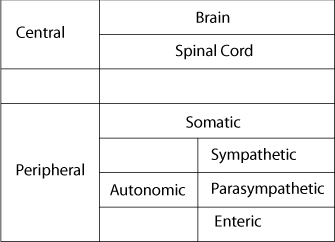
Vertebrates have complex sense organs and exhibit complex behaviors, which requires a nervous system capable of handling diverse and on-going tasks. Vertebrates are cephalized, meaning they have an identifiable head or anterior end where nervous functions are centralized. However, vertebrates still show evidence of a segmented body plan and this segmented arrangement can be detected in the nervous systems.
The somatic nervous system is responsible for receiving external stimuli and coordinating the body’s movements. The autonomic nervous system is the involuntary part of the nervous system where all of the internal maintenance maintains homeostasis. The autonomic nervous system is divided into the sympathetic system and parasympathetic system. The sympathetic nervous system responds to impending danger or stress, like the “fight or flight” response, and is responsible for the increase in heartbeat and blood pressure. The parasympathetic nervous system often referred to as “the rest and digest system” is responsible for such things as the constriction of the pupil, the slowing of the heart, the dilation of the blood vessels, and the stimulation of the digestive and genitourinary systems when at rest.
Which organism has the simplest nervous system?
The correct answer is C. Flatworms, annelids, and arthropods have more complex nervous systems.
Aristotle listed five senses: taste, hearing, touch, sight, and smell. Most modern physiologists add several more. These include:
Tactition: The sense of pressure
Thermoception: The sense of heat or absence of heat
Nocoception: The sensation of pain
Equilibrioception: The sense of balance
Proprioception: The sense of body awareness; this is the sense that allows one to perceive the position of hands, feet, and other body parts even when the eyes are closed.
There are several other candidate senses for humans. Some physiologists list as many as 21 senses.
In addition to the 10 or so human senses, there are several senses possessed by some animals but not by humans. These are not just extensions of human senses, such as the amazing ability of dogs to detect smells or bats’ high frequency hearing, but completely different senses.


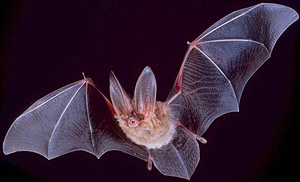
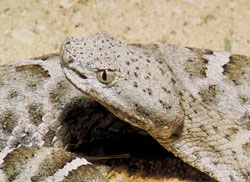
The notion that all life on Earth has descended from a common ancestor through a process of evolution, or descent with modification, is now considered the central, unifying principle of biology. All organisms consist of cells. All known living organisms use molecules based on a common carbon-based biochemistry. All organisms inherit characteristics from their parents through genetic material, which is remarkably similar, even among organisms as diverse as fish, scorpions, and bacteria. All use a universal genetic code based on just four or five nucleotide bases. Bacteria can read, transcribe, and translate human genes.
Embryonic development is also remarkably similar between different organisms. In most metazoan organisms the basic steps of the early embryo development share similar morphological stages and include similar genes.